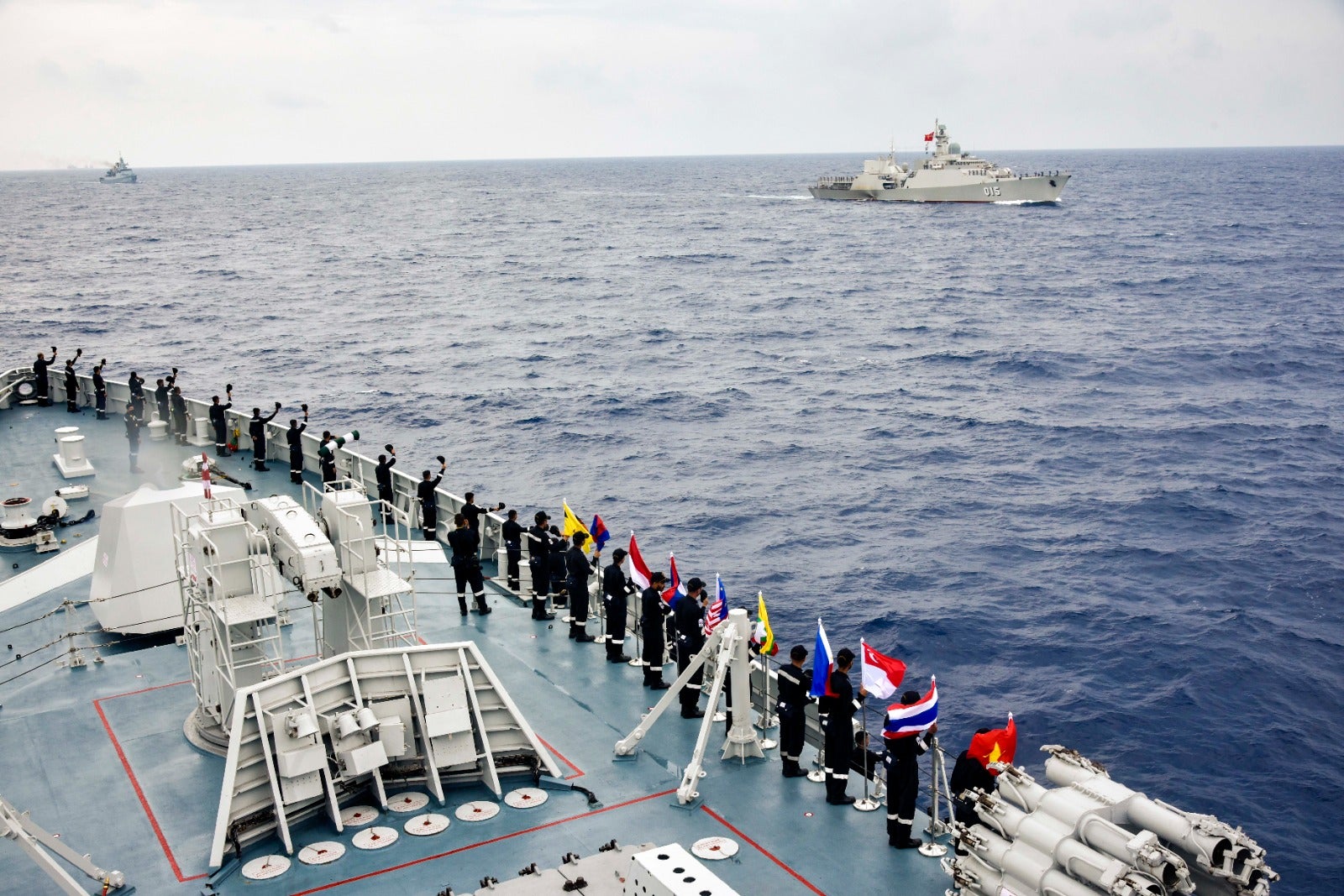Summary
The first-ever maritime exercise between India and the Association of Southeast Asian Nations (ASEAN) in early May 2023 came at a time when the relations between New Delhi and the premier regional forum had entered an uncertain phase. As the external conditions that facilitated deeper engagement between India and ASEAN changed significantly, the two sides have to work a lot harder than before to advance the strategic partnership.
The inaugural ASEAN-India maritime exercise that was hosted by Singapore at Changi naval base from 2 to 8 May 2023 is an important milestone in the evolution of New Delhi’s security engagement with Southeast Asia. India has engaged in regular bilateral exercises with individual ASEAN member states and a trilateral one with Singapore and Thailand; but this is the first time a joint exercise between India and ASEAN, as a whole, has been conducted.
The exercise was announced at the 19th ASEAN-India Summit in Phnom Penh in 2022 when the two sides unveiled the establishment of a Comprehensive Strategic Partnership. The exercise is aimed at “promoting maritime Cooperation and enhancing trust, friendship and confidence amongst ASEAN and Indian Navies.” According to official Indian sources, approximately 1,400 personnel manning nine ships participated in the Sea Phase of the multilateral naval exercise. India’s indigenously designed and built ships – destroyer INS Delhi and stealth frigate INS Satpura – maritime patrol aircraft P8I and integral helicopters exercised with ASEAN’s naval ships from Brunei, Indonesia, Malaysia, Philippines, Singapore, Thailand and Vietnam.
The exercise comes at a time when the broader context in which the India-ASEAN relationship has been changing. Three major factors in the early 1990s facilitated the rapid expansion of the engagement between India and ASEAN. One was the acceleration of the era of economic globalisation. India’s own reforms that began at the turn of the 1990s provided a solid basis for economic interaction between New Delhi and Southeast Asia. Second, the post-Cold War age saw the lessening of great power conflict that in the past had deleterious effects on Asia. For India on the one hand, and ASEAN on the other, there was no geopolitical rivalry to manage as they had to in the Cold War decades. Third, ASEAN took the lead in organising a regional economic architecture that built on the above two favourable conditions. This architecture was open to India to participate in and develop deeper institutional ties with Southeast Asia.
India and ASEAN now face a very different regional context. For one, the idea that economic globalisation is irreversible has taken a political beating. Major economic powers like the United States (US) and China are reconsidering their approaches to globalisation. India has not been immune to the emerging trend of deglobalisation.
India’s decision in 2019 to walk out of the negotiations on the Regional Comprehensive Economic Partnership (RCEP) at the very last minute has raised questions about the future and has made ASEAN unhappy. For some of them, at least, India’s presence in the RCEP was seen as critical in constructing a region that has internal economic balance. ASEAN’s disappointment in the trade domain has been compounded by the significant geopolitical turn in the region.
The introduction of a new geography – the Indo-Pacific – by the US has generated much unease in Southeast Asia. Over the decades, ASEAN has grown comfortable with the Asia-Pacific nomenclature. To be sure, ASEAN, as a collective, issued its own framework for the Indo-Pacific in June 2019. The ‘ASEAN Outlook on the Indo-Pacific’, however, did not resolve Southeast Asia’s problem with the geopolitical context that gave birth to the new geopolitical construct.
For many in Southeast Asia, the Indo-Pacific has become inseparable from the unfolding conflict between the US and China. It is no surprise that China has vehemently opposed the Indo-Pacific concept. Russia has been equally vocal in opposing the Indo-Pacific framework.
Reinforcing the Chinese and Russian opposition to the Indo-Pacific has been the revival of the Quadrilateral Security Dialogue (Quad) that brings together Australia, India, Japan and the US.
The Quad, moribund until 2017, has gained rapid traction, leading to five leaders-level summits between 2021 and 2023. Questions have arisen about the Quad’s potential to undermine the centrality of ASEAN which has been leading the efforts to develop a cooperative regional order. Concerns about India’s growing conflict with China and Delhi’s embrace of the Indo-Pacific and the Quad underline the dangers of deepening misperceptions between New Delhi and ASEAN. Preventing the emergence of a strategic divergence over the Quad and the Indo-Pacific and ensuring sustained regional cooperation is an important task for the leadership of India and ASEAN.
India’s ASEAN partners do not want to choose between the US and China, while New Delhi has moved closer to Washington to manage its tensions with Beijing. This has created a very complex geopolitical situation in the region. Although ASEAN is uncomfortable, it is reasonable to assume that the Quad is here to stay.
For India, the challenge is to make a sustained effort to address ASEAN’s concerns over the Quad. New Delhi must also ensure that the Quad will not only coexist with ASEAN, but also complement ASEAN’s efforts for regional peace and security. One way of doing this is to intensify the political consultations between India and ASEAN and expand security cooperation. The inaugural ASEAN-India maritime exercise is an important step in that direction.
. . . . .
Professor C Raja Mohan is a Visiting Research Professor at the Institute of South Asian Studies (ISAS), an autonomous research institute in the National University of Singapore (NUS). He can be contacted at crmohan@nus.edu.sg. The author bears full responsibility for the facts cited and opinions expressed in this paper.
Pic Credit: India in Vietnam@Twitter
-
 More From :
More From :
-
 Tags :
Tags :
-
 Download PDF
Download PDF



